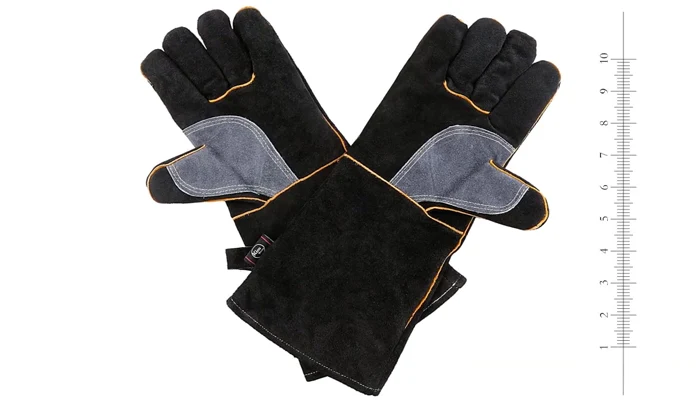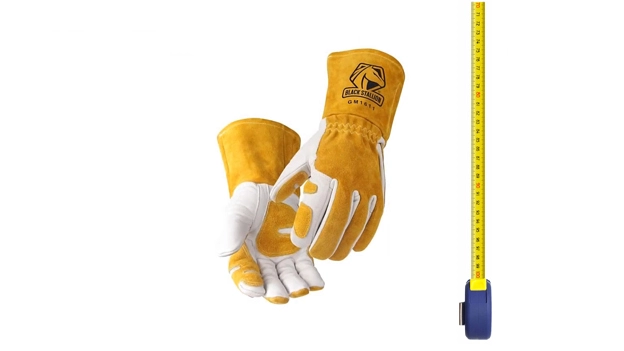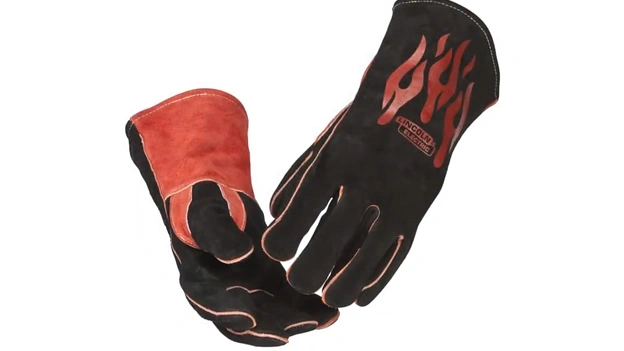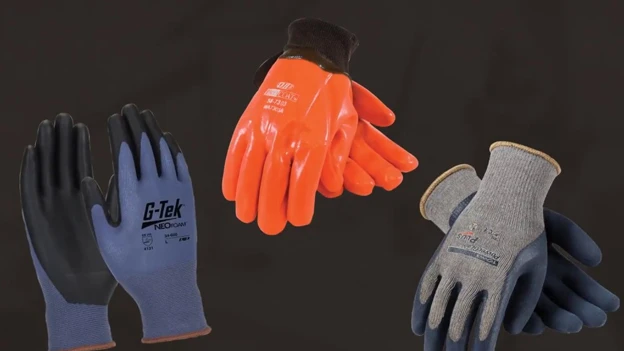Phone:
(701)814-6992
Physical address:
6296 Donnelly Plaza
Ratkeville, Bahamas.

You might think that all welding gloves are the same size, but this isn’t the case. Different brands and models manufacture welding gloves in different sizes. Too big size or too small size, welding gloves can lead to safety issues as they won’t do you any good if they’re not the correct size.
Welders need gloves to protect their hands from the intense heat and sparks generated by the welding process. It’s hard to know which welding gloves will fit your hands properly and offer protection for you.
Our guide on “How to Measure Welding Glove Size” offers a simple way to measure your hand size to ensure that you get the perfect fitting welding gloves. We have a wide variety of information about gloves available in our blog to find the ideal information regarding welding gloves and get the best pair according to your needs.

When you’re ready to get a new pair of protective gloves for your welding task, ensure you have the right size. Too large gloves can be cumbersome and challenging to grab items. Too small gloves can constrict and cause your hands to sweat. Follow these steps:
Pay attention to the right glove size when working with welding gloves. This is because the gloves must fit snugly to protect your hand from the heat and sparks produced during the welding process.
When the gloves are too large, they can impede your flexibility and make it difficult to grip the welding torch. If the gloves are too small, they will not provide adequate coverage and could increase your risk of injury. Loose gloves can become entangled in the welding equipment, posing a safety hazard.

In the construction of welding gloves, various materials can be used. Leather is the most common material because it is durable and provides good heat protection. It is also possible to use materials such as Kevlar or Nomex. In some welding gloves, cotton or wool may be used as a lining.
This provides additional insulation and protects the hands from the weld’s heat. For better protection against heat and flames, these materials are often used in welding gloves designed for higher temperatures. We discussed some of the most common materials used in welding gloves below.
Leather: Leather gloves are a great choice for those who want the protection of a conventional glove without sacrificing comfort. Comfort, safety, and protection are keys to welding gloves.
These gloves are made of soft, pliable leather, which provides fantastic agility and a more natural range of hand motion. The soft material conforms to your hand, and the padded palm area helps to absorb impact.
Leather gloves are breathable, so your hands won’t get too sweaty during extended wear. When it comes to comfort, leather welding gloves are hard to beat.
Nomex: Nomex welding gloves are a type of personal protective equipment (PPE) worn by welders to prevent their hands from getting burned by the heat and sparks generated during welding. These gloves are hand gloves made from a material called Nomex. This material is a heat-resistant synthetic fiber with flame retardant.
Welders use Nomex welding gloves to protect themselves from the high temperatures produced by the welding process. Firefighters also use these gloves to protect their hands against the flames of fires.
Nomex welding gloves are made in various sizes and styles to fit the needs of different welders. The welding gloves are an essential piece of safety equipment for any welder as they are available in different thicknesses to provide different levels of protection.

Kevlar: Kevlar is a high-quality material to consider for a welding glove. Kevlar gloves are made from a strong, synthetic fiber that is heat resistant and provides excellent protection from sparks and spatters.
Kevlar is much lighter than leather, so it won’t weigh you down or cause fatigue during long welding sessions. Another advantage of Kevlar gloves is that they’re machine washable, so you can keep them clean and look new with minimal effort, whether a professional welder or a hobbyist.
Kevlar welding gloves are an excellent option for protecting your hands. The characteristics of Kevlar gloves include their strength, modulus, toughness, and thermal stability.
Demanding industrial and advanced technology applications were the driving forces behind its development. There are numerous types of Kevlar gloves available for a variety of applications.
Welding gloves are not typically made from cut-resistant materials. Hand protection against welding equipment’s intense heat and sparks is provided by welding gloves. The gloves are usually made of leather or other materials that can be easily pierced by a sharp knife.
This means they will not protect your hands from sharp objects like knives or metal shards. Some welding gloves may have Kevlar or other types of reinforcement in the palms to protect against cuts, but this protection does not ensure the gloves are cut-resistant.
Welding gloves protect the hands from the heat and sparks generated by welding equipment. Most gloves are made of heavy duty leather or another fire resistant material, and they are often lined with Kevlar or another heat resistant fabric.
The protection offered by welding gloves against burns is good enogh. The hand should be allowed to cool down periodically after working in welding gloves since no glove is entirely extremely heat resistant.
A welding glove’s ability to protect against heat and sparks is reduced if damaged, so it is crucial to inspect it regularly if there is any wear and tear on the glove.

It is common for welders to remove their gloves after welding for various reasons.
The welder removes the gloves to check the weld for if there are any defects. By running the hand over the weld, the welder can feel any bumps or irregularities that might indicate a problem.
By following these simple steps, you can ensure that you select the correct size welding gloves and get back to work safely and comfortably. We have outlined how to measure welding glove size and shared some tips on what you should and what you must look for when choosing gloves.
Taking accurate measurements and consulting a size chart, you can be sure to find gloves that fit comfortably and securely on your hands. With a well fitting pair of gloves, you can enjoy all the benefits of welding without having to worry about hand discomfort or loss of dexterity.
We hope you found this information helpful, and be sure to check out our other welding and glove articles on our website. It is greatly appreciated that you have taken the time to read this, and we thank you for your attention.